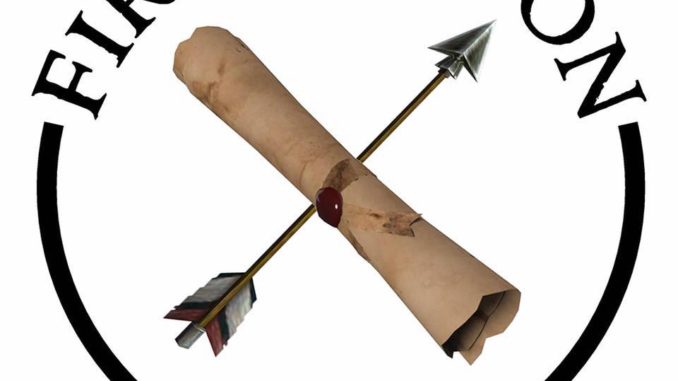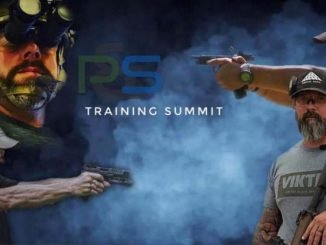
This is an AAR of my recent experiences with First Person Safety’s Defensive Pistol Skills class. The thrust of this course is contextualizing the Four Lifestyle Rules of owning a firearm. Put another way, the class serves to equip students with tools to address the issue of “How do I defend myself in a Wal Mart parking lot without also committing criminally negligent homicide?” It goes beyond merely talking about safety: it implements it. Up front, I highly recommend both the instructor and the course.
Who is First Person Safety?
Lee Weems is the chief deputy of a sheriff’s office in the southeastern United States. He holds certifications through the Rangemaster Firearms Instructor Development Course, the Force Science Institute, Law of Self Defense’s Instructor Program, Massad Ayoob Group’s Deadly Force Instructor Program, and a wide variety of law enforcement firearms training organizations; he also holds an Advanced rating from the Rogers Shooting School and has been a student for much of the who’s-who in the training industry. Through First Person Safety, Weems offers courses for pistol, shotgun, and lever-action rifle, as well as instruction on legal issues surrounding concealed carry and self-defense.
Applying the Four Lifestyle Rules of Owning a Firearm
Weems’s instruction priority for Defensive Pistol Skills is to apply the well-known firearms safety rules outside the range context. He has thus changed his terminology for those rules to the “Four Lifestyle Rules.” Sometimes rules are put in nontraditional contexts. For example, to emphasize “Know the status of your firearm at all times,” students are often reminded “a full gun is a happy gun.” Slide-lock reloads are treated as user-induced malfunctions: students are (jokingly) shamed publicly when their gun runs empty during drills. The underlying purpose: the fight may not be over when you think it’s over, so it behooves you to begin with a full gun.
Students learn various techniques to avoid covering a no-shoot with a muzzle. One that stands out is what Weems terms the “Metro Ready.” It’s low ready except with the muzzle offset from the target. To understand the relevance of the technique, consider this scenario: you are challenging an unknown intruder in your home at gunpoint. It could be a burglar, but it could also be your 70-something neighbor with Alzheimer’s. Should you be muzzling them? Weems facilitates discussion on the legal applications of these rules and techniques, and indeed much of the learning is done through discussion. Muzzle aversion is stressed because, in some contexts, muzzling somebody can form the basis for a felony charge.
Likewise, drawing and not shooting was stressed – and later part of a scored qualification. Presenting the firearm and challenging a subject was practiced frequently. Weems quotes Claude Werner as saying that many defensive shooting courses are really little more than firing squad courses: students are taught how to shoot, but not when to shoot. Much of the discussion is focused around avoidance and deterrence. Lee’s twenty-odd year background in law enforcement is especially useful here. The class was fortunate to also have the input of a prominent local attorney.
Testing the Material
The techniques taught culminate in an exercise Weems calls the Blue Falcon Drill. Basically, the class is divided into relays; the first relay sets up a target array with designated shoot targets which must be engaged in a particular manner – a headshot, two body shots, or a failure drill. Interspersed in front of, around, and behind those targets are no-shoot targets. The other relay must shoot it blind: no walk-throughs are allowed. The student must navigate the course of fire and properly engage all shoot targets. Muzzling a no-shoot is a disqualification. Hitting a no-shoot – including with a pass-through – is a disqualification.
The Blue Falcon Drill tests all of the skills Weems teaches in the course while also requiring the shooter process information during shooting. In addition to properly identifying targets and processing how they must be shot, students must both avert their muzzles and angle their shots to successfully complete the exercise. It’s walking while chewing bubblegum and juggling at the same time. An interesting observation: every shooter in this course with a strong competition background muzzled the no-shoots while moving between target arrays.
The course culminated with a scored qualification and a few rounds of shooter-versus-shooter contests where each shooter shot a mirror-image course of fire (the fastest one wins). There is great value in this: there may not be a timer in a gunfight, but there is another guy doing his best to shoot you before you shoot him. The artificial stress induced by these mini-competitions is especially helpful and, given the course’s subject matter, muzzle aversion was a portion of the competition.
Weems now has a signature drill titled the Payback Drill. The passing standard has an interesting pedigree: it represents roughly 95% of the average performance of some very respected members of the training industry who tested the drill during its development. It’s a balance-of-speed-and-accuracy sort of affair, and those who pass in front of a class full of students get a patch. Three students, including myself, took home a patch.
Conclusion
As usual, I had an incredibly positive experience with First Person Safety. I would highly recommend this course for anybody serious about concealed carry and lawful self-defense. The course goes beyond merely how to shoot a gun, and instead focuses on working with it in the real world.
For those in the Southeast, strongly consider giving First Person Safety a try. Most courses are one-day affairs and all are very reasonably priced. In addition, Weems has begun taking his roadshow course – Applied Pistolcraft (which covers much of the material discussed above, along with use-of-force instruction and technical shooting instruction) – out of the area, with classes in Virginia and Texas scheduled so far in 2020.
For more info, visit www.firstpersonsafety.com.





Be the first to comment